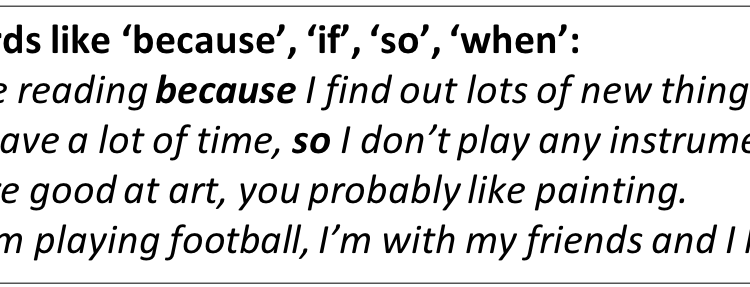Preparing for A2 Key Speaking Part 2, Phase 1
This post, with tips and ideas to help students prepare for A2 Key Speaking Part 2, follows on from my previous post, About A2 Key Speaking Part 2.
Let’s consider what candidates are being asked to do in the first phase of Part 2 and think about how we can train them to use a range of lexis and of grammar.
Let’s look at the sample task from the 2020 A2 Key for Schools Handbook, available here.
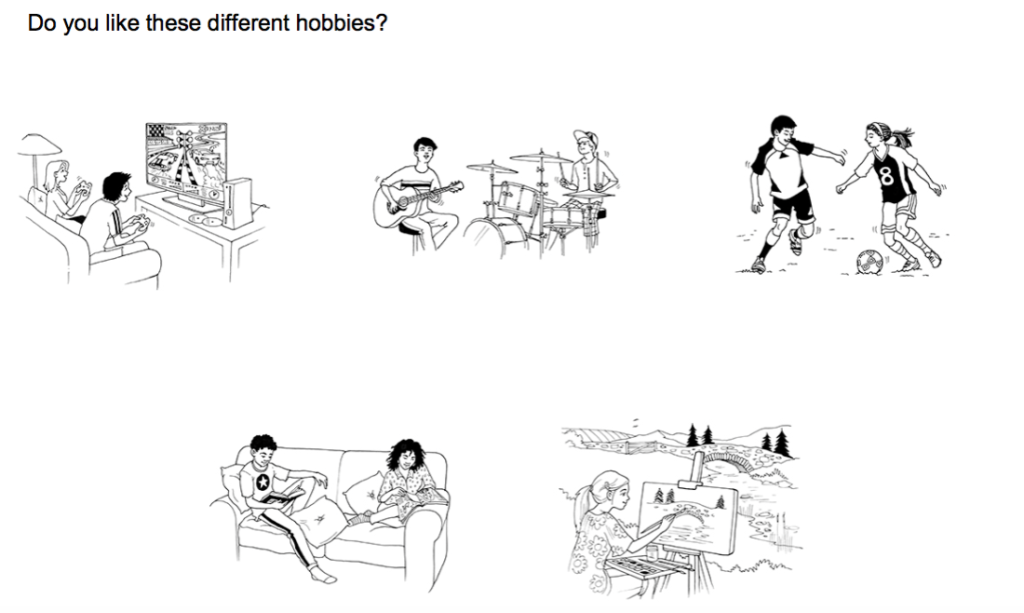
Five pictures
At the start of Phase 1, candidates are given five pictures to talk about, and are expected to say if they like or don’t like these things (in this case, hobbies).
Tip: Think of two ways
The first thing I train students to do is to look at each picture and try and think of two ways of talking about that picture. For example:
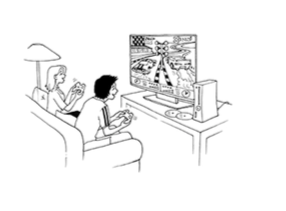
playing video games/gaming

painting/art
In the A2 Key Speaking Test, of course, they won’t have time to do this for all of the pictures, but by getting them to think of the importance of paraphrasing, they can hopefully use it in the Test.
e.g.
Sophia (candidate A): I love painting.
Martin (candidate B): I don’t really like art much.
Tip:
Tell students that the question is also printed on the sheet above the pictures. They can go back to it to remind themselves what they have to speak about.
Tip: Language for talking about likes and dislikes.
So, what language can candidates use to answer the question?
The simplest way, (and something that most students tend to overuse) is to use a verb:
I love/like/don’t like/hate + ing.
But, there are other ways.
Train students to talk about their likes by:
1. Using adjectives to give their opinion.
(Reading) is amazing! / great! /cool!
fun!
lovely. /interesting.
(Video games) are special.
popular.
OK. all right.
boring. /terrible.
not really my thing.
See the A2 Key Wordlist for a range of adjectives that students can use.
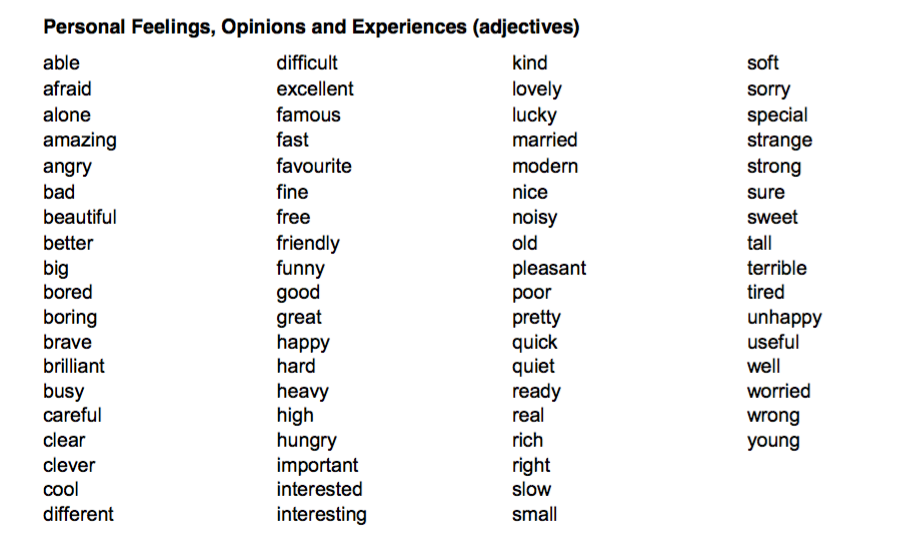
2. Contrasting a hobby they like with one they don’t like.
e.g. Playing music is fun, but reading is boring.
3. Saying how often they do something.
I always play video games in the evening.
My family often relax with a book at weekends.
Me and my friends sometimes play together in a band.
At home, we never do sport.
Tip: Thinking of what to say
Younger students especially, might not have ideas of what to say about one or more of the pictures. What I find useful is to train them to think of someone they know – their grandmother, cousin, neighbour, teacher – and imagine what they would say.
e.g.
I’m sure that my grandma/ dad/ sister/ brother/ cousin/ teacher thinks that
Tip: Talk about all of the pictures.

If candidates only talk about one or two of the pictures, they are very likely to repeat things or maybe be irrelevant after a while. Train them to aim to talk about all five pictures, (but also tell them that they won’t be penalised if they don’t manage to talk about all five in the time allowed!)
Tip: give reasons and examples.
As well as saying if they do, or don’t like these activities, candidates are asked to say why. Let’s think about the language they can use for this.



In the second part of Phase 1, the examiner will ask each candidate one or more questions on the same theme.
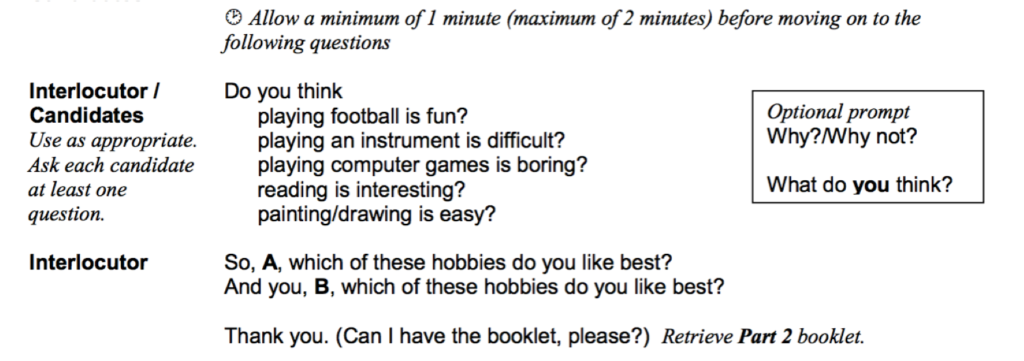
As you can see, the language above (adjectives for opinions and feelings, giving reasons, will also be useful to answer these questions.
In my next post, I’ll focus on Phase 2! Back soon!

